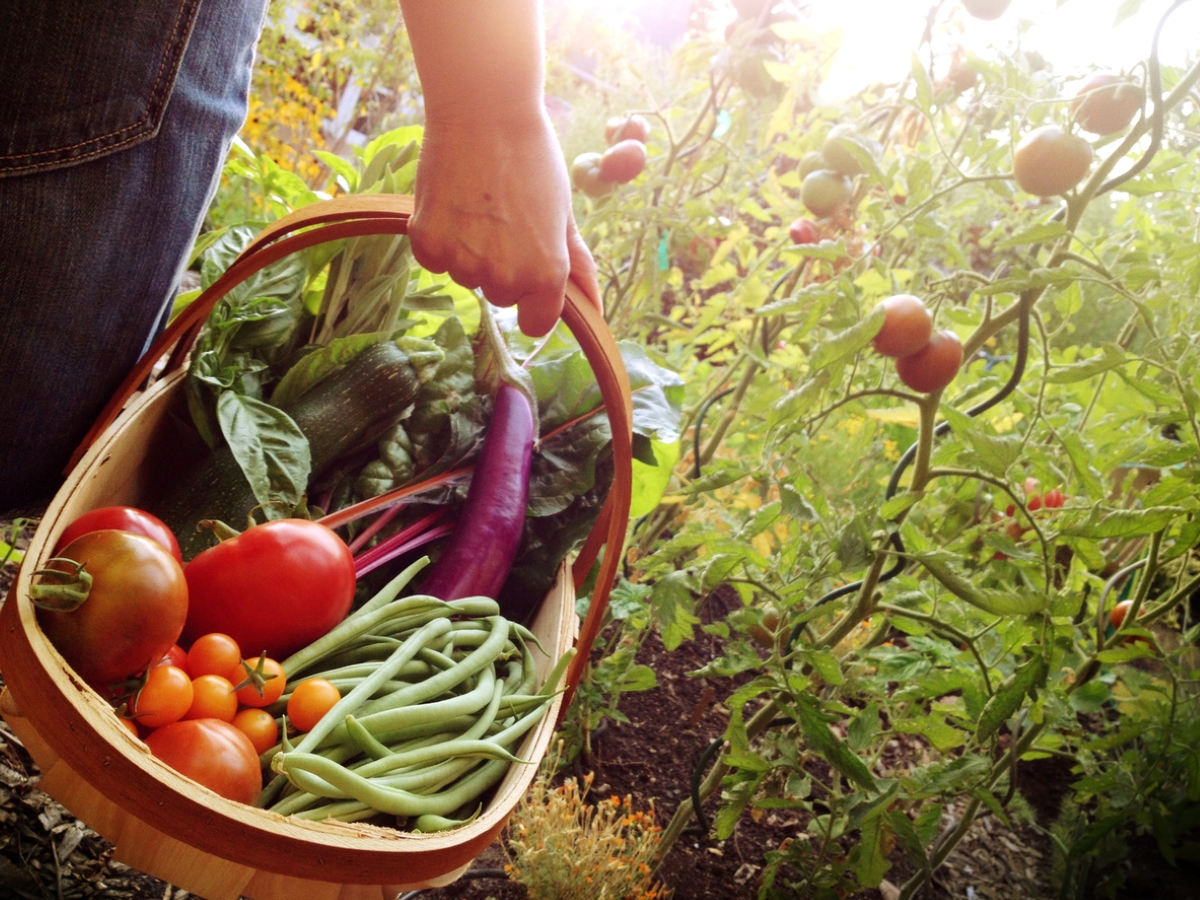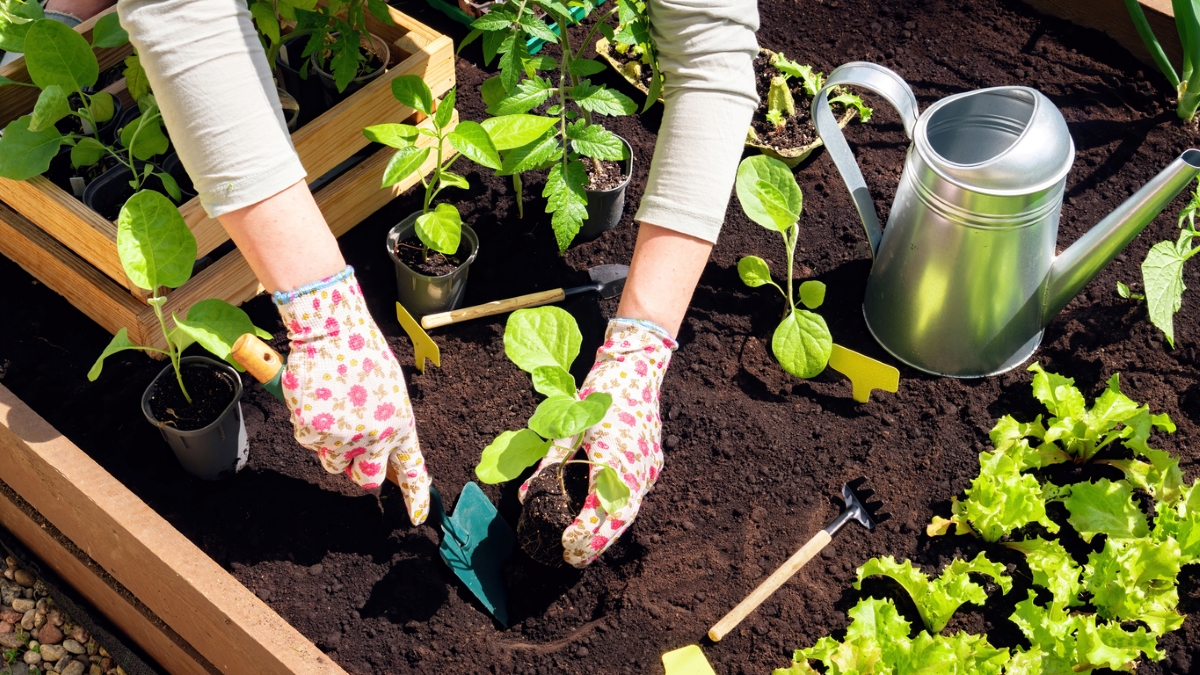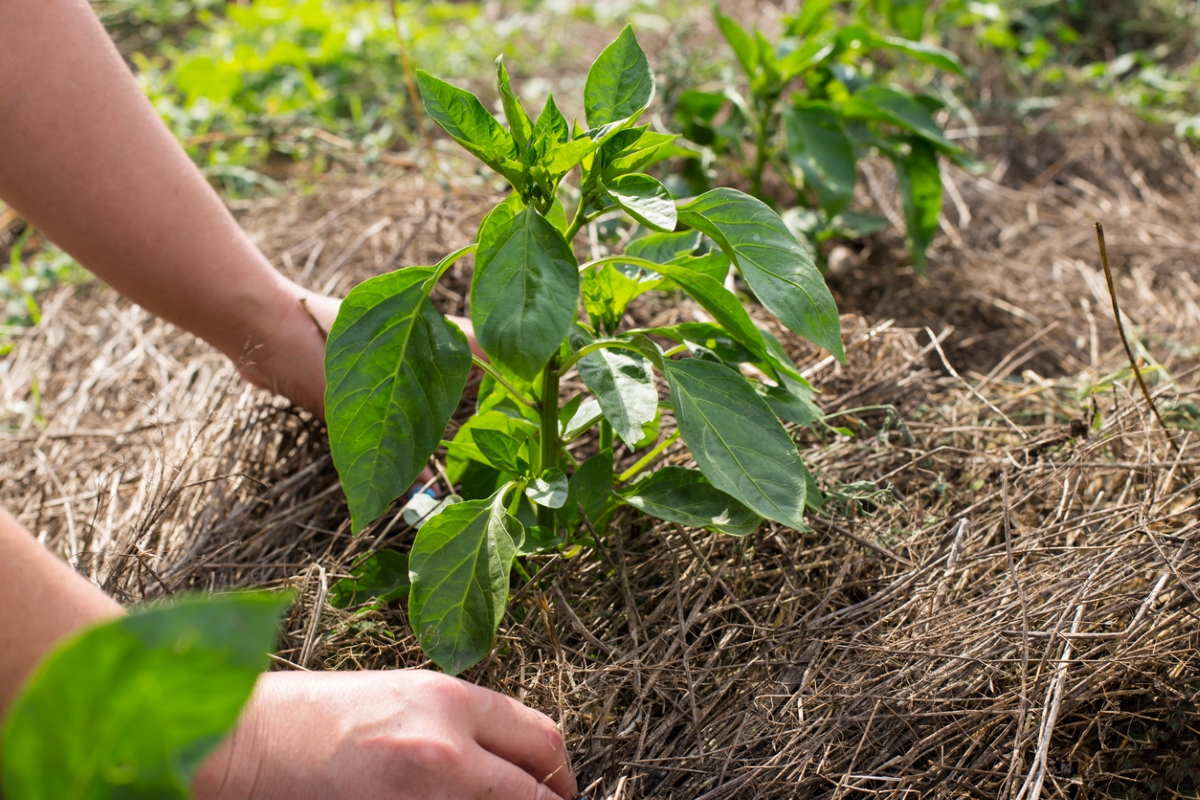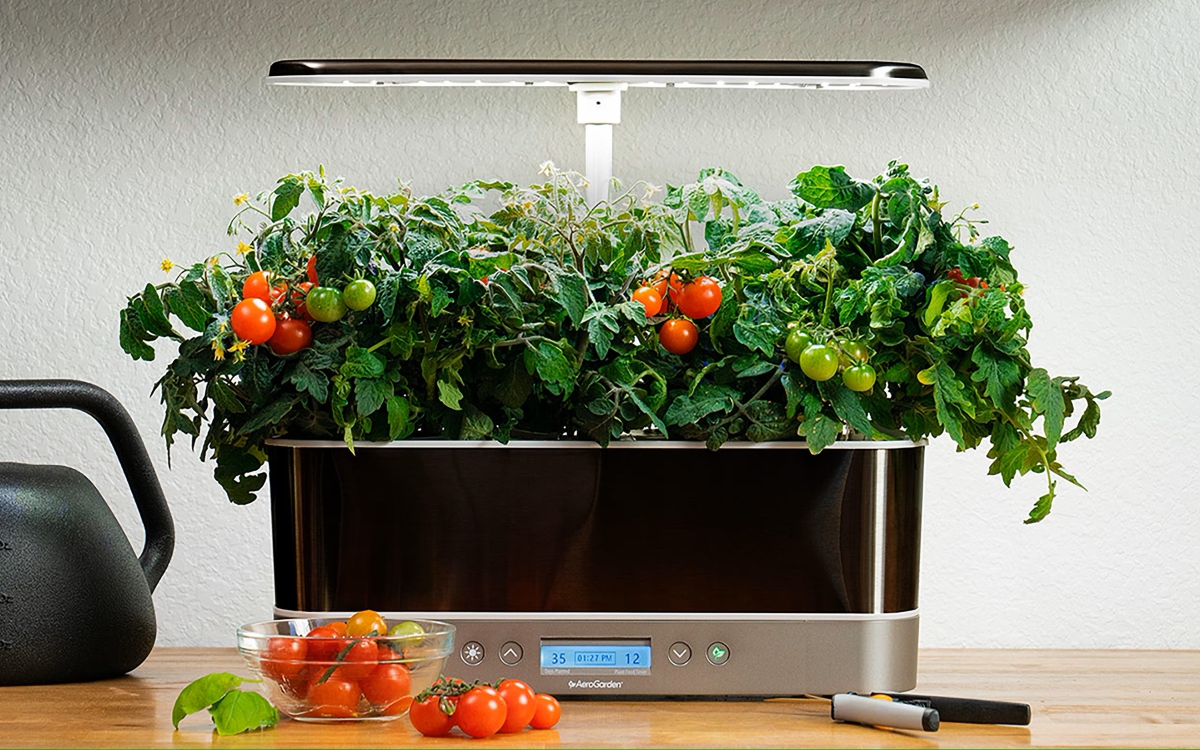

We may earn revenue from the products available on this page and participate in affiliate programs. Learn More ›
There’s nothing better than harvesting fresh, vine-ripened vegetables you’ve painstakingly cultivated in your own backyard. But organic produce—whether homegrown or purchased at the supermarket—doesn’t come cheap. It costs time, money, and natural resources to grow food.
Still, with realities such as inflation, climate change, and supply shortages causing food insecurity worldwide, it’s easy to see why more and more people are choosing to plant vegetable gardens at home.
The key to responsibly growing your own food today is managing costs wisely, especially when it comes to water consumption. Typically, vegetable gardens need 1 inch of rain per week, or 0.623 gallons of water per square foot. For a 10-foot by 10-foot plot, that’s a little more than 62 gallons of water each week. According to Bonnie Plants, you should double that in arid regions, and irrigate even more during heat waves.
As temperatures rise, growing seasons get longer, and droughts become more prevalent, it can be difficult to maintain the watering regimen many common vegetable plants require. But there are ways to adapt your plot so irrigation is less of a drawback. Ahead, learn the best ways to conserve water while still relishing the joys of cultivating fresh, healthy food for your household.
Choose drought-tolerant vegetables.
Most backyard vegetable plants require a lot of water to grow well, but there are some varieties that naturally tolerate little rainfall, and others that are specifically bred to withstand drought conditions.
Consider honing your plant selection to the following types of annual and perennial vegetables. When choosing seeds, be sure to look for cultivars that specify drought resistance in catalogs or on packaging.
- Chile peppers
- Artichoke
- Okra
- Sweet potato
- Pole beans
- Mustard greens
- Tomatillo
- Roma tomato
- Eggplant
- Swiss Chard
While this list features plants that thrive in hot, dry conditions, water-conscious home gardeners should also consider making the most of milder spring and fall seasons when evaporation is less of a factor. Succession planting varieties that are better suited to cooler temperatures can increase your annual vegetable yield substantially.
Plant in beds vs. containers.

If you have the option, it’s best to grow vegetables in-ground or in raised beds rather than in containers. While you can amend the soil for better drainage and moisture retention wherever you plant, any growing medium will dry out faster—and require more water—in pots compared to beds.
Water deeply and at the right time.
New gardeners may be tempted to reach for the hose and dampen the soil every time it looks dry, but such frequent surface irrigation can actually do more harm than good. It forces the plants to form shallow roots that are weaker and more susceptible to heat stress.
Instead, encourage crops to develop resilient root systems by watering deeply and less often. During the height of summer, it’s best to water your vegetable patch in the early morning while it’s still relatively cool.
Inhibit evaporation.

The longer water sits on the soil’s surface, the greater chance it will evaporate or get wicked away by the wind before it can reach plant roots. One of the best ways to improve saturation in a vegetable garden is by incorporating compost. Whether store-bought or straight from your own tumbler, it bolsters soil structure, retains moisture, and helps plants absorb nutrients.
In addition, a thick layer of organic mulch (old leaves, grass clippings, shredded bark, straw, etc.) can help slow down evaporation and suppress weeds, both of which support water conservation.
Reduce transpiration.
Plants naturally release water during photosynthesis. This process, called transpiration, speeds up as temperatures rise, causing plants to dehydrate, wilt, and require more water. To reduce transpiration, plant your vegetable patch in partial shade. If you don’t have any trees or natural cover, hang a shade cloth like this highly rated option available at Amazon over low-growing crops to keep them cool.
Repurpose household water.
Some of the water used inside your home can be repurposed in your backyard vegetable garden. For example, while you’re waiting for the shower to warm up in the morning, place a bucket under the faucet to collect the clean water before it washes down the drain. After boiling potatoes for dinner, set the water aside to cool instead of dumping it in the sink. You can reuse this otherwise wasted water in your vegetable garden at no additional cost.
Try hydroponics.

According to the University of Nevada Extension, hydroponic vegetable gardens use up to 90 percent less water than traditional soil plots. While the potential savings are great, DIY hydroponics comes with a learning curve and higher upfront costs. But for those itching to master a new skill, hydroponic gardening can pay off in the long run, especially when it comes to water conservation.
